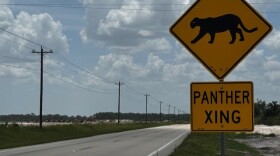On the heels of a public health emergency declaration from the World Health Organization, epidemiologists and public health experts warn the U.S. is running out of time to contain a monkeypox outbreak that has infected nearly 3,000 Americans.
"We're losing daylight," UCLA epidemiologist Anne Rimoin, who has studied monkeypox for decades, told NPR. "Every day that we aren't continuing to push forward on all fronts, the less likely it is that we will be able to contain it."
U.S. officials have already expanded testing, made tens of thousands of vaccines available and made plans to release another 1.6 million doses in the coming months.
But the limited supplies have not matched demand, some health officials have reported. And despite limited testing, case numbers have grown so rapidly in recent weeks that a larger response may be necessary to contain the outbreak, experts say – if containment is still possible.
"It's going to be tough, but that needs to still be the goal," Dr. Preeti Malani, an infectious disease specialist at the University of Michigan, told NPR. "What we do in the coming days and weeks will really determine where we are a few months from now."
The U.S. is closing in on 3,000 cases of monkeypox
Over the weekend, the World Health Organization declared the outbreak a public health emergency. Biden administration officials have said they are discussing whether to declare an emergency in the U.S.
The discussions represent a change of tone from the beginning of the outbreak in May. Then, there were only a handful of cases outside of Africa, where the disease is endemic, and health officials in the U.S. and around the world expressed confidence that the disease was containable.
As of Friday afternoon, the CDC had reported 2,891 cases of monkeypox in the U.S. – a number more than 10 times higher than a month ago.
The CDC had tests available before this outbreak began – a significant difference from COVID-19 – but experts have complained that the agency is testing cases at too slow a pace. The Biden administration began shipping tests to commercial laboratories in late June, with the expectation that testing capacity would be "ramped up" through the month of July.
"We are way behind in a lot of aspects, including rapid testing and access to treatment for those patients who might need treatment," Malani said.
More robust contact tracing, too, could help combat the virus.
"Ultimately, we cannot vaccinate and treat our way out of monkeypox," Malani said. "Prevention is critical."
Monkeypox has a long incubation period, she said. After an initial exposure, it can be weeks before symptoms develop. An early heads-up from a robust contact tracing effort could help people exposed to monkeypox isolate and seek tests or vaccines before symptoms appear.
The virus most often spreads through prolonged physical contact. It is not a sexually transmitted disease; it can spread through non-sexual physical contact, or by handling clothes or bedding used by an infected person. The disease can also spread via respiratory droplets.
Like in other Western countries, the outbreak in the U.S. has mostly affected men who have sex with other men. But the CDC has also reported infections in a small number of cisgender women. And on Friday, the agency announced the outbreak's first documented cases in children – a toddler in California and an infant whose family was traveling in Washington, D.C.
Lessons from COVID-19
The monkeypox outbreak arrived at a time when public awareness of infectious disease is high, experts pointed out. The COVID pandemic has made Americans familiar with public health concepts like isolation, rapid testing and contact tracing.
But other lessons from COVID have seemingly not stuck – like how early and how forcefully to take action when an outbreak is still constrained to a handful of people.
"I hate to say this, but I feel like 'here we go again,'" Rebecca Fischer, an infectious disease specialist at Texas A&M University, told NPR.
Researchers are quick to point out that the two diseases are very different. They belong to different families of virus and require different levels of contact to spread. Overall, COVID is more transmissible.
Many of COVID's lessons could be applied to any infectious disease, Fischer said.
"Public health thought that we had learned this great thing – that we need to respond aggressively up front, and with a lot of resources and a lot of attention up front, if we hope to curtail and contain," Fischer said. "And I get the sense that sort of aggressive upfront action didn't really happen."
Still, public health officials and epidemiologists alike say that containment could be within reach.
Unlike COVID, monkeypox was already a known quantity to researchers before the current outbreak. The disease was first discovered in humans more than 50 years ago, and its similarity to smallpox means smallpox treatments and vaccines are also effective against monkeypox. The U.S. has millions of doses already stockpiled.
"I absolutely think that it can be contained. But whether it will be depends upon the resources dedicated to doing this and the speed with which we can act," said Rimoin of UCLA. "It really will require a major concerted effort locally, nationally and globally."
Editor's note: The original photo accompanying the story was considered offensive by some and has since been changed.
Copyright 2022 NPR. To see more, visit https://www.npr.org.









